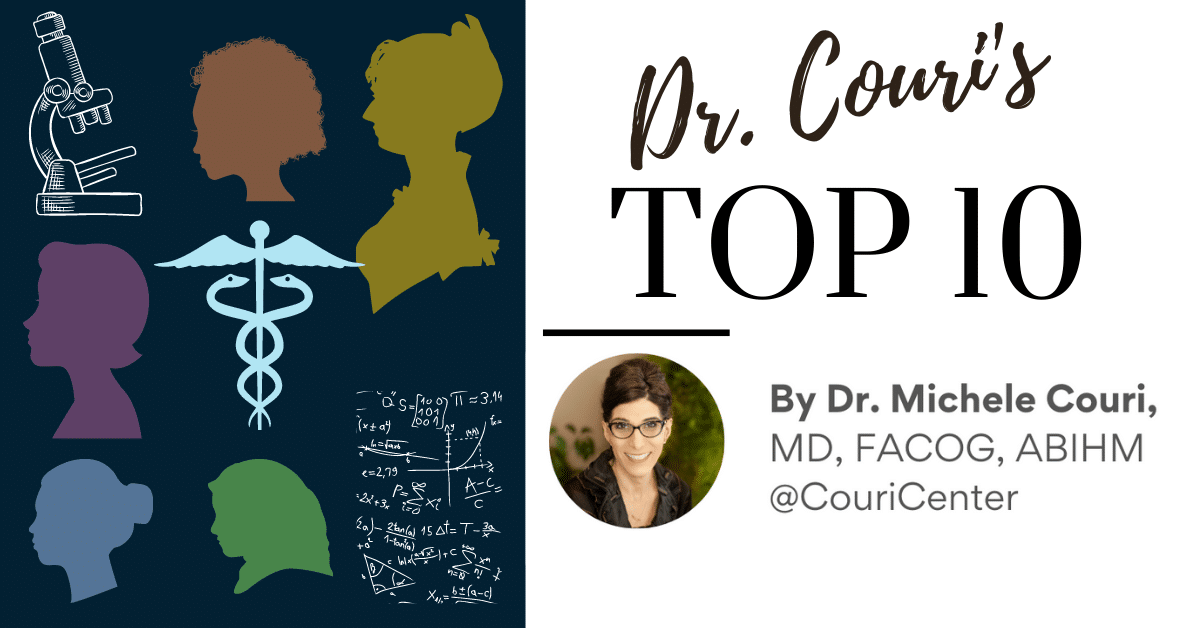February 28, 2022

10 Inspirational Women to Honor During Women’s History Month*
- Rosalind Franklin (1920-1958) – an English chemist who took X-ray pictures of DNA to ultimately discover its double helix design. Unfortunately, the immense contribution of her work to the future field of molecular biology was not recognized during her lifetime. She died at the age of 38 of ovarian cancer. Three men, Francis Crick, James Watson, and Maurice Wilkins, won the Nobel Prize in 1962 for the “discovery” of the DNA double helix.
- Jean Macnamara (1899-1968) – an Australian medical doctor and scientist who discovered that there was more than one strain of the poliovirus. This helped pave the way for the successful development of the Salk polio vaccine in 1955. Throughout her career, she was devoted to children’s health and welfare.
- Maria Montessori (1870-1952) – an Italian physician and educator who graduated with honors from medical school in 1896. She is best known for the type of education that bears her name. Using scientific observation and experience gained from her earlier work with young children, Maria designed learning materials and a classroom environment that nurtured the natural desire of children to learn and provided freedom for them in their quest for knowledge. Maria opened the first Montessori school in Rome in 1907, and today, these schools can be found throughout the world.
- Cecilia Payne-Gaposchkin (1900-1979) – originally from England, Cecilia became an American astronomer and astrophysicist who concluded in her 1925 doctoral thesis that stars were composed of hydrogen and helium. Her work was initially rejected but was later proven true through independent observations. Cecilia was later appointed a full professorship at Harvard University, where she ultimately became the head of the Department of Astronomy there.
- Irena Sendler (1910-2008) – a Polish nurse and social worker, Irena is best known for saving the lives of many Jewish people during World War II. Irena and her team helped to rescue approximately 2,500 Jewish children out of the Warsaw Ghetto by providing them with false documents and shelter. She was arrested in 1943 and sent to Piawiak prison. She was tortured for information but never told her captors the truth in order to safeguard the lives of those she helped escape. She later escaped from prison and went on to be a social worker later in life. She died at age 98.
- Nettie Stevens (1861-1912) – an early American geneticist and biologist who attended Stanford University and received her Ph.D. Working with insects, she realized that chromosomes are different among the sexes, and she is credited with discovering the X and Y chromosomes. Her contributions to the study of genetics, cytology, and embryology are invaluable. She published 40 research papers during her short career, as she died of breast cancer at the age of 50.
- Trota of Salerno (12th Century) – Trota was a medieval medical practitioner and writer from Salerno, Italy, specializing in women’s reproductive health and childbirth. She authored a three-volume work called the Trotula, a group of textbooks that were the most widely disseminated and translated works in women’s medicine throughout Europe in the 12th and 13th centuries. Trota had been forgotten in history until one of her authenticated textbooks was discovered in the 20th Century.
- Gladys West (1930- ) – an American mathematician whose work significantly contributed to developing the Global Positioning System (GPS). Gladys was Valedictorian of her high school graduating class and went on to earn both an undergraduate (1952) and master’s degree (1955) in mathematics from Virginia State College. By teaching a computer to account for gravity, tides, and other forces that act on Earth’s surface, West and her team created a program that could precisely calculate the orbits of satellites. These calculations made it possible to determine a model for the exact shape of Earth, called a geoid. It is this model, and later updates, that allows the GPS system to make accurate calculations of any place on Earth. It wasn’t until 2018 that West was formally recognized for her contribution to the development of GPS by the Virginia General Assembly.
- Patricia Bath (1942-2019) – the first African American female ophthalmologist, Patricia invented a medical device (Laserphaco Probe) to remove cataracts. She was the first African American female doctor to receive a medical patent. She attended medical school at Howard University and completed a fellowship in Ophthalmology at Columbia University. She became the first female faculty member in the Department of Ophthalmology at UCLA. Her invention helped restore the vision to people who had been blind for more than 30 years.
- Marcella LeBeau (1919-2021) – a Native American military nurse who served with the United States Army in WWII; Marcella was a war hero. She used her expertise to save the lives of those who stormed Normandy on D-Day and during battles, including the Battle of the Bulge. She went on to be honored by the country of France with its highest military honor, the French Legion of Honor Medal. After the war, Marcella used her medical talent to help the native people of her tribe by becoming a prominent advocate of Native American Health.
I am humbled to have been able to share a glimpse of these women’s impact on all of humanity.
Dr. Couri
*Women’s History Month in March technically honors women’s contributions to American history; however, I chose to honor women throughout the world in this writing.
Sources Cited:
Kunz, Anita. Original Sisters. New York: Pantheon Books, 2021.
Wikipedia
Biography.com
